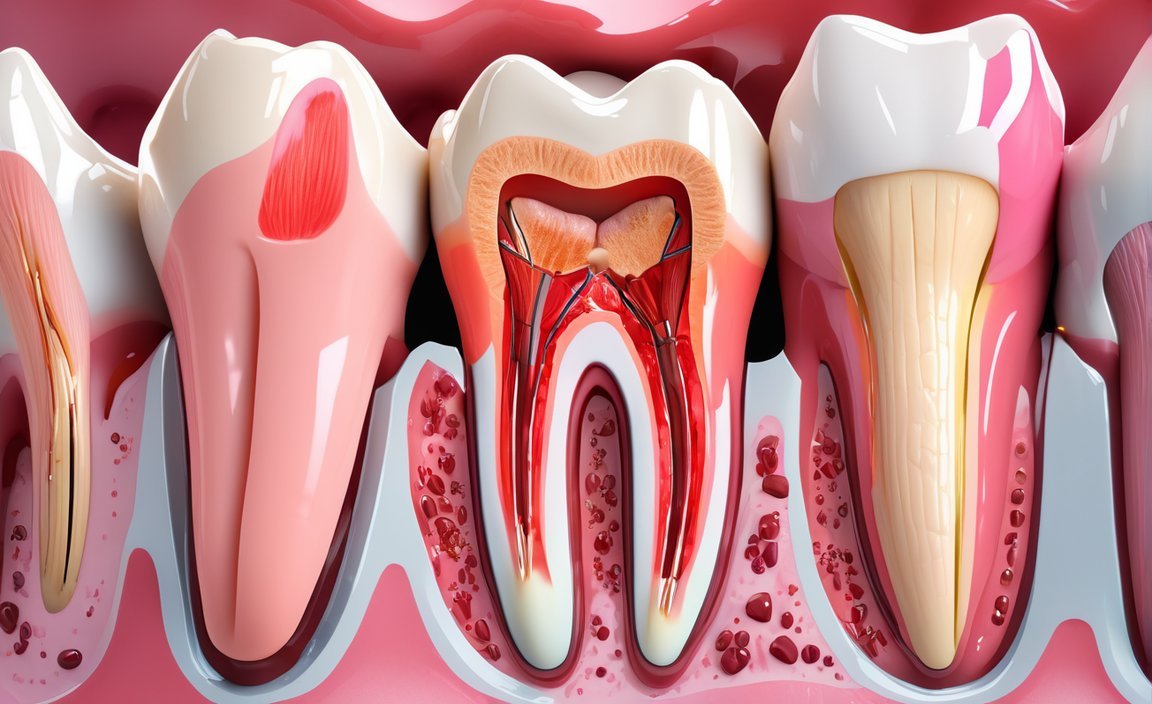Looking for a comprehensive guide on the pros and cons of root canal treatment? You’ve come to the right place. In this informative article, we delve into the advantages and disadvantages of this commonly performed dental procedure. As an experienced dental professional specializing in endodontics, I’ve witnessed the transformative effects of root canal treatment in saving teeth from extraction. Utilizing my extensive knowledge and skill set, I aim to address all concerns and misconceptions surrounding this procedure, empowering readers with the relevant facts to make informed decisions about their dental health.
Key Takeaways:
- Root canal treatment can save severely damaged or infected teeth, avoiding the need for extraction.
- This procedure provides relief from tooth pain caused by infection or inflammation.
- By preserving the natural tooth, root canal treatment helps prevent alignment issues that can occur after tooth removal.
- Treated teeth may become weaker and might require additional dental work to prevent further damage.
- Multiple dental visits may be necessary for complex cases, which can be inconvenient for some patients.
- Root canal treatment carries some risks, and additional procedures may be needed in case of treatment failure.
- Tooth extraction followed by replacement options like dental implants or bridges may be considered instead of root canal treatment.
- Proper oral hygiene, such as regular brushing and flossing, is crucial to prevent infection and maintain healthy teeth.
- Regular visits to a dentist for check-ups and professional cleanings are important.
- The cost of root canal treatment varies depending on factors like the severity of tooth damage. Consulting a dentist is recommended for an accurate cost estimate.
Advantages and Disadvantages of Root Canal Treatment

Root canal treatment, also known as endodontic therapy, can be a lifesaver when it comes to saving severely damaged or infected teeth. However, like any dental procedure, there are both advantages and disadvantages to consider. In this article, we will dive into the pros and cons of root canal treatment so you can make an informed decision about your dental health.
The Pros of Root Canal Treatment
Saves the tooth: The primary advantage of root canal therapy is that it allows you to keep your natural tooth. By removing the infected or damaged pulp inside the tooth and sealing it, the tooth can be saved, preventing the need for extraction.
Relieves tooth pain: Root canal treatment effectively alleviates tooth pain caused by infection or inflammation. Once the infected pulp is removed and the tooth is restored, you can say goodbye to that constant toothache.
Prevents alignment issues: Saving the natural tooth through root canal therapy can help prevent future alignment issues. When a tooth is lost, nearby teeth can shift to fill the gap, leading to bite problems and potential misalignment. By preserving the original tooth, root canal treatment helps maintain the proper alignment of your teeth.
The Cons of Root Canal Treatment
Teeth weakening: It’s important to note that teeth treated with root canal therapy may become weaker than they originally were. This weakened tooth may require additional dental work, such as placing a dental crown, to protect it from further damage.
Possible multiple dental visits: Depending on the complexity of your case, root canal treatment may require multiple dental visits. This can be inconvenient for some patients, especially those with busy schedules. However, keep in mind that each visit is essential to ensure the success and longevity of the treatment.
Risks and possible failure: Like any medical procedure, root canal treatment carries some risks. In some cases, the treatment may not be successful, and additional procedures, such as endodontic surgery, may be required to preserve the tooth. It’s crucial to thoroughly discuss these risks with your dentist before proceeding with the treatment.
Conclusion
Root canal treatment comes with its own set of advantages and disadvantages. While it is a reliable method to save severely damaged or infected teeth, it’s important to consider the potential risks and understand the possible need for additional dental work. Remember, consulting with a dental professional is crucial to determine the best course of action for your specific dental needs and concerns.
To learn more about root canal treatment, you can visit reputable sources like Media Center Dental and Larchmont Dentists, where you can find further information on the advantages and disadvantages of this procedure.
And always remember to maintain proper oral hygiene by regularly brushing, flossing, and visiting your dentist for check-ups and professional cleanings. Taking preventive measures is essential in ensuring the success of any dental treatment.
So, if you’re facing severe tooth damage, infection, or persistent pain, consult with your dental professional to assess if root canal treatment is the right option for you.
Air transport offers numerous advantages over other modes of transportation, including speed, convenience, and global connectivity. Discover the advantages of air transport and explore how it can revolutionize your travel experience. Learn more at advantages-of-air-transport.
Relief from pain and discomfort

Root canal treatment is a dental procedure that offers significant relief from pain and discomfort caused by a severe infection or decay in the innermost part of a tooth. When the pulp, which contains the blood vessels and nerves, becomes infected or damaged, it can lead to excruciating pain and sensitivity. The purpose of root canal treatment is to remove the infected pulp, clean the tooth’s interior, and seal it to prevent further infection.
Key Takeaways:
– Root canal treatment provides relief from pain and discomfort caused by severe tooth infections or decay.
– The procedure involves removing the infected pulp, cleaning the tooth’s interior, and sealing it to prevent further infection.
Understanding the Advantages
Root canal treatment offers several advantages for patients experiencing dental pain and discomfort. By addressing the underlying infection or decay, this procedure provides both immediate and long-term relief.
First and foremost, root canal treatment allows patients to save their natural teeth. Tooth extraction may seem like a quick fix, but it doesn’t address the underlying issue and can lead to complications such as shifting teeth and loss of jawbone density over time.
Root canal treatment not only relieves pain but also enhances dental functionality. The restored tooth can once again perform its natural functions, such as chewing and speaking properly, without any discomfort. By saving the natural tooth, root canal treatment contributes to maintaining the overall alignment and balance of the teeth, preventing potential dental issues in the future.
Additionally, root canal treatment ensures that the affected tooth looks indistinguishable from the adjacent teeth. Maintaining a natural appearance is crucial for many patients, as it helps boost their confidence and self-esteem.
Addressing Misconceptions
Despite its numerous advantages, root canal treatment is often surrounded by myths and misconceptions. It’s important to dispel these misconceptions to help individuals make informed decisions about their dental health.
One common misconception is that root canals are always painful procedures. However, advancements in dental techniques and anesthesia have significantly minimized discomfort during root canal treatment. In fact, the main purpose of the procedure is to alleviate the existing pain caused by the infected pulp.
Another misconception is that a tooth must hurt in order to require a root canal. While severe pain is a common symptom, there are cases where the infection may not cause noticeable discomfort initially. Regular dental check-ups are essential to identify and treat early signs of infection or decay before they become painful and require more extensive treatment.
Potential Risks and Considerations
As with any dental procedure, root canal treatment carries some risks and considerations that individuals should be aware of. While these instances are relatively rare, it’s important to have a clear understanding of potential outcomes.
One possible risk is the failure of the root canal treatment, which may require additional procedures or even tooth extraction. However, it’s crucial to note that root canal treatment has a high success rate, with up to 90% of procedures being successful.
It’s also important to remember that, like any restoration, a tooth that has undergone root canal treatment may require additional dental work in the future. This could include the placement of a crown or dental filling to protect and strengthen the treated tooth, ensuring its long-term stability and functionality.
Conclusion
Root canal treatment offers profound relief from pain and discomfort caused by severe tooth infections or decay. By saving the natural tooth, this procedure preserves dental functionality, appearance, and prevents complications that can arise from tooth extraction. It is essential to address common misconceptions surrounding root canals and consider potential risks, but the procedure’s high success rate validates its effectiveness in providing long-term relief and preserving oral health.
Citations:
– Larchmont Dental Associates. Source
– NHS. Source
Prevention of Further Infection or Decay
Root canal treatment is a dental procedure that aims to save teeth from extraction by removing infected pulp and nerves. This comprehensive guide will provide you with valuable information about the advantages and disadvantages of root canal treatment, with a specific focus on preventing further infection or decay.
Understanding Root Canal Treatment
Root canal treatment involves cleaning the inside of a decayed or infected tooth and filling it with a rubbery substance called gutta-percha. This procedure is crucial to prevent complications such as abscesses or bone loss, which can arise if the infected pulp is not removed.
While root canal treatment is a safe and effective method to save teeth, it is important to note that like any medical procedure, it does come with risks. It is essential to consult with a dental professional to assess the specific circumstances and determine the best course of action.
Preventing Root Canal Infections: Key Measures
To prevent root canal infections and maintain good oral health, it is essential to follow these key measures:
Practicing Good Oral Hygiene: Brush your teeth at least twice a day, floss daily, and use an antibacterial mouthwash. This helps eliminate plaque and prevent the buildup of harmful bacteria that can lead to tooth decay.
Regular Dental Check-ups: Schedule regular visits to your dentist for check-ups and professional cleanings. These appointments ensure early detection and prompt treatment of tooth decay or trauma, reducing the risk of needing root canal treatment.
Prompt Treatment of Tooth Decay or Trauma: If you experience tooth pain, sensitivity to hot and cold, or swelling, seek immediate dental attention. Early intervention can help prevent the progression of decay or infection, reducing the likelihood of requiring root canal treatment.
Keep in mind that even with the best preventive measures, root canal infections may still occur. It is important to be aware of the symptoms, such as severe toothache, sensitivity to hot and cold, and swelling. If you experience these symptoms, it is vital to consult with a dental professional promptly for an accurate diagnosis and appropriate treatment.
Key Takeaways:
- Root canal treatment is a dental procedure that aims to save teeth from extraction by removing infected pulp and nerves.
- Preventing root canal infections involves practicing good oral hygiene, regular dental check-ups, and prompt treatment of tooth decay or trauma.
- It is crucial to consult with a dental professional for an accurate diagnosis and appropriate treatment if you experience symptoms of a root canal infection.
- By following preventive measures and seeking timely dental care, you can minimize the risk of needing root canal treatment.
Citations:
– Larchmont Dental Associates
– Healthline
Long-term Cost Benefits: The Pros and Cons of Root Canal Treatment
Root canal treatment is a commonly performed dental procedure that aims to save a damaged tooth from extraction. It offers several benefits, including pain relief and tooth preservation, but it also has some drawbacks to consider. In this article, we will explore the advantages and disadvantages of root canal treatment, with a specific focus on its long-term cost benefits.
Pros of Root Canal Treatment
Pain Relief: Root canal treatment provides effective relief from tooth pain caused by infections or decay. Unlike tooth extraction, which involves removing the tooth entirely, root canal treatment allows you to keep your natural tooth while eliminating the source of the pain.
Tooth Preservation: By saving your natural tooth, root canal treatment helps to maintain the integrity and alignment of your teeth. Losing a tooth can lead to shifting of the surrounding teeth and potential oral health issues. Root canal treatment prevents these problems by preserving your original tooth.
Cons of Root Canal Treatment
Brittle Tooth: Following a root canal, the treated tooth may become brittle and more prone to fractures. However, this can be addressed with preventive measures like dental fillings that strengthen the tooth and reduce the risk of fractures.
Cost: It is important to consider the long-term cost implications of root canal treatment. While the procedure itself may have a higher upfront cost compared to tooth extraction, it offers significant cost benefits in the long run. Root canal treatment preserves your natural tooth, eliminating the need for expensive tooth replacement options like dental implants or bridges.
With its ability to preserve your natural tooth, root canal treatment can save you money in the long term by avoiding the need for extensive dental work to replace extracted teeth. Additionally, it helps to maintain the alignment of your teeth, reducing the risk of costly orthodontic treatments.
Root canal treatment may involve multiple appointments and intricate steps, contributing to the initial higher cost. However, when considering the long-term benefits and the potential savings on future dental procedures, the cost is often justified.
Key Takeaways:
- Root canal treatment provides pain relief and preserves your natural tooth.
- Your natural tooth is important for maintaining oral health and preventing alignment issues.
- Root canal-treated teeth may become brittle, but this can be addressed with dental fillings.
- While the initial cost of root canal treatment may be higher, it offers long-term cost benefits by avoiding the need for tooth replacement options and orthodontic treatments.
- Consult with a dental professional to determine the best treatment option for your specific dental condition.
Sources:
- Larchmont Dental Associates: The Top 17 Pros and Cons of a Root Canal Treatment
- Healthline: Root Canal Infection: Causes, Symptoms, Prevention, Treatment
FAQ
Q1: What are the advantages of root canal treatment?
A1: Root canal treatment has advantages such as pain relief and preservation of the natural tooth.
Q2: Does root canal treatment relieve tooth pain?
A2: Yes, one of the main benefits of root canal treatment is that it helps to relieve tooth pain caused by infection or inflammation.
Q3: Will I lose my tooth if I undergo root canal treatment?
A3: No, root canal treatment aims to save severely damaged or infected teeth, preventing the need for extraction.
Q4: Are there any disadvantages to root canal treatment?
A4: Yes, some disadvantages include the potential for a treated tooth to become brittle and the higher cost compared to tooth extraction.
Q5: Is root canal treatment a painful procedure?
A5: Root canal treatment is typically a painless procedure thanks to modern techniques and effective anesthesia.
- Protect Big Black Bears: Effective Conservation Strategies - March 28, 2025
- Discover when was glass first made: Ancient origins & global impact - March 28, 2025
- Unlocking It’s Greek to Me: A History and Meaning - March 28, 2025
















